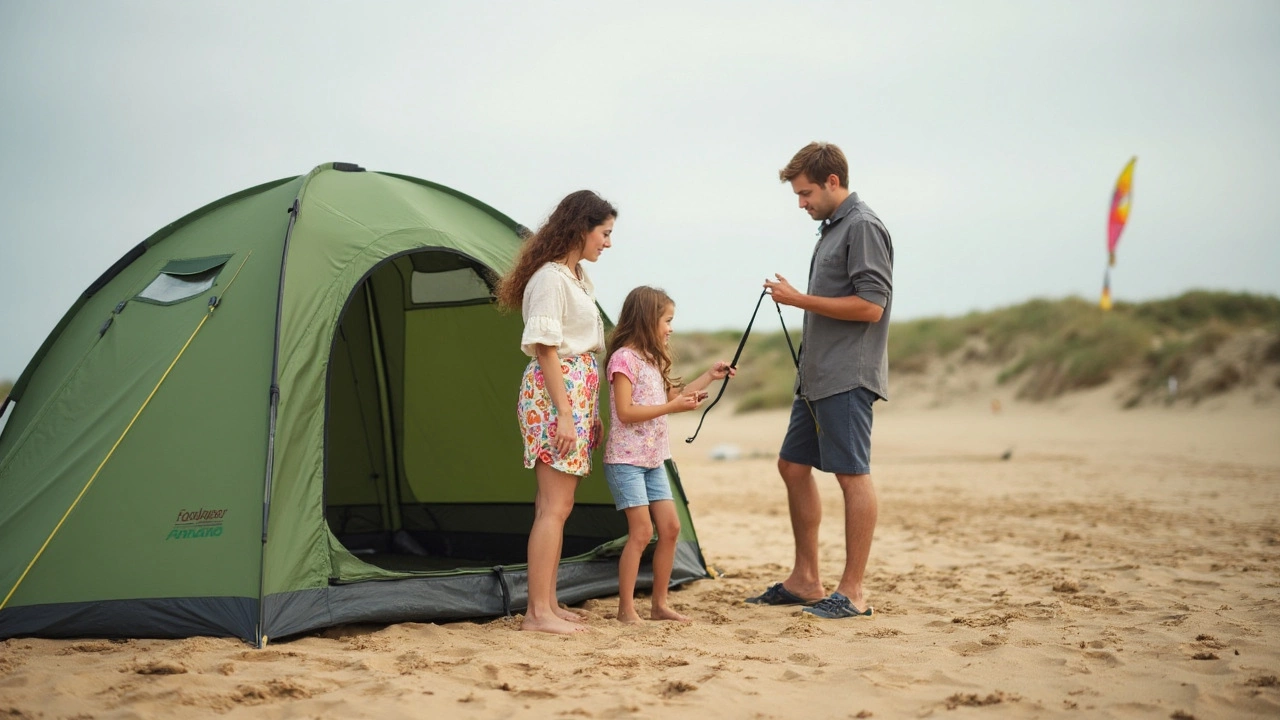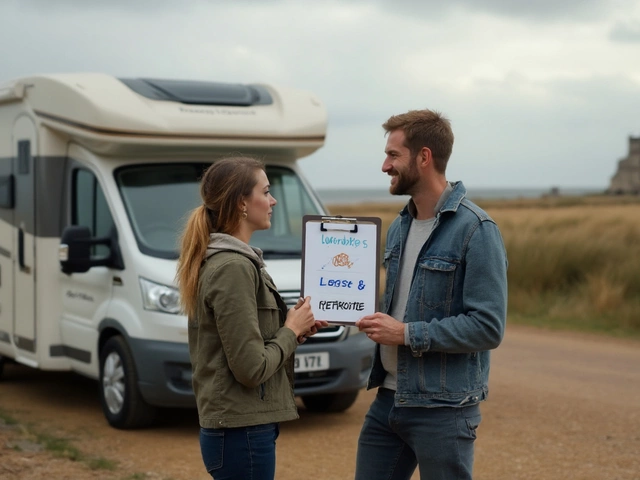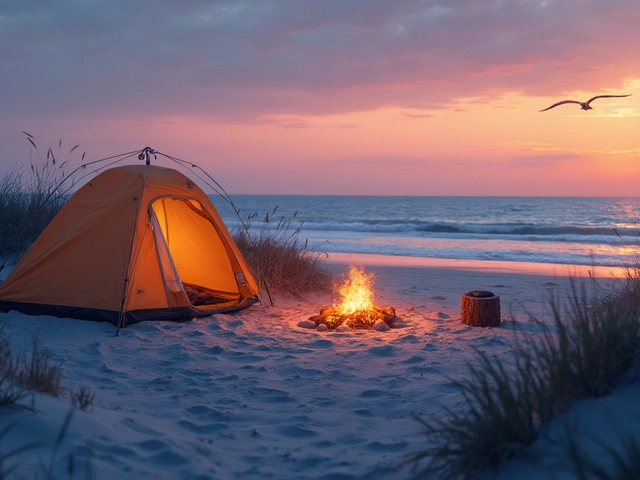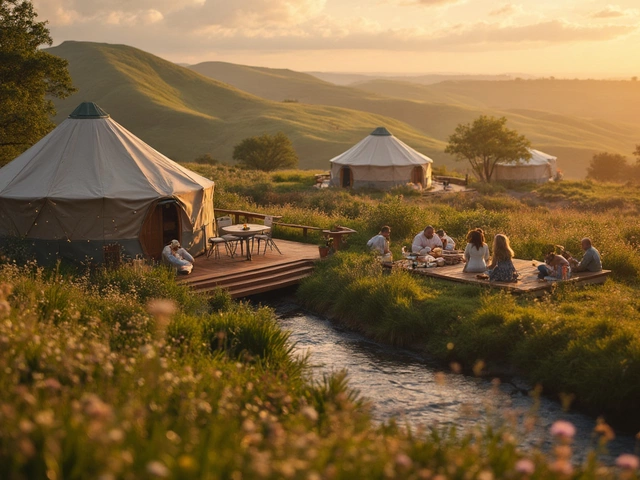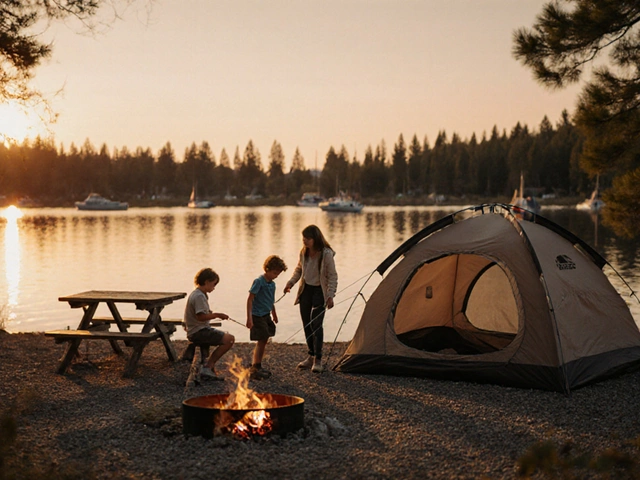If you’re thinking about dragging your regular camping tent onto the beach, you’re not alone. Plenty of people have tried it, hoping to save cash or avoid buying extra gear. The truth? Some tents handle the beach better than others, and the difference can make or break your weekend.
Beaches throw problems at your tent that a forest or campground never will. Sand shifts under every step. Even lightweight wind can knock your tent around if it’s not properly anchored. Regular tent stakes? Forget about them. They don’t grip in loose sand for long. Manufacturers usually design camping tents to work on packed soil, not blowing grains and endless sunlight.
That said, nobody wants to haul extra baggage or buy a special tent for a single camping trip. If you already own a tent and want to hit the surf with it, you just need to know what you’re in for and how to work around it. Trust me, having spent nights with my kid, Larkin, on windy beaches, shortcuts quickly become regrets if you don’t plan ahead.
- Will Your Tent Work on Sand?
- Weather Challenges You Can’t Ignore
- Keeping Your Tent Anchored
- Protecting Your Gear
- Dealing with Sun, Salt, and Wind
- What to Pack for a Beach Camp
Will Your Tent Work on Sand?
The short answer? Most standard camping tents will stand up on the beach, but they probably weren’t built for it. The issues start with how you anchor the tent. Traditional stakes included with most tents are thin and meant for regular dirt. On a sandy beach, they slide right out with the smallest breeze or tug on the tent.
If you’re committed to your usual tent, you’ll need to switch out your stakes. “Sand stakes” or “beach anchors”—usually wider and longer—spread the load much better. If you don’t want to buy new gear, try filling stuff sacks with sand or rocks and burying them as DIY anchors. Doesn’t look as pretty, but it works in a pinch.
Another weak spot: the tent floor. Beaches eat away at thin ground sheets, and a regular tent floor isn’t made for sand’s constant abrasion. Lay down a tarp or a heavy-duty groundsheet before setting up. Sometimes beaches also have tiny sand fleas or crabs who love crawling in, so go for a tent with bug-proof mesh if you can.
One thing folks overlook is that not every tent stands up well to coastal breezes. Tents with lots of mesh and low, aerodynamic shapes stand much better against gusts than tall cabin-style tents. Here’s a quick comparison of common tent types used at beach campsites:
| Tent Type | Performance on Sand | Wind Resistance |
|---|---|---|
| Dome Tent | Decent with proper anchors | Good |
| Cabin Tent | Struggles with strong gusts | Poor |
| Pop-up Tent | Quick setup, but anchors easily fail | Fair |
So, can you use your trusty tent? You sure can, but make a few tweaks and don’t expect perfection. If this is your first time giving beach camping a shot, borrow or test your setup before committing the whole family for a weekend.
Weather Challenges You Can’t Ignore
The beach is a totally different beast when it comes to weather. You can’t just set up your beach camping tent and hope for the best. First off, wind is your biggest enemy. It’s way stronger by the water, even if it feels just breezy when you show up. A pop-up tent that handled a rainy night in the woods can get flattened or flipped by a gust on the sand. The National Weather Service says coastal wind speeds can easily jump to 20 mph or more—that’s enough to snap tent poles or rip cheap fabric. Ask anyone who’s chased their tent across the sand, and they’ll tell you it isn’t fun.
Humidity is another thing. On many beaches, especially hot ones, the air holds a ton of moisture. Your regular camping gear might feel damp all the time. Zippers can jam up from salt and humidity mixing. In some spots, nighttime temperatures drop fast, so you’ll sweat in the day and freeze after dark. That switch messes with sleep, especially if your tent isn’t well ventilated.
Salt spray from sea breezes is sneaky. It gets everywhere—zippers, seams, poles. Over time, this wrecks gear and makes everything harder to clean. Even tents made for long campsite use can’t always handle this, unless you rinse them really well afterward. I learned this the hard way when every zipper on our bags started to stick shut after a long weekend with Larkin on the Outer Banks.
- Check local weather reports before you commit, especially for strong winds or storms.
- If gusts hit 25 mph, think twice before putting up a tent right out in the open.
- Look for beach locations with natural windbreaks—dunes, big rocks, or driftwood can shield your tent just enough.
- Bring a tarp to throw over your tent for extra water protection.
So, prepping for a regular campsite? That’s a walk in the park compared to adapting your setup for the beach. Double-check your camping tent and gear. A little effort here saves a ton of hassle later.
Keeping Your Tent Anchored
Here’s the truth: regular tent stakes and sand don’t mix. You poke a classic stake into the beach, and the first gust of wind will yank it right out. That’s why anchoring your camping tent in loose sand takes a totally different approach than in dirt or grass.
Your best shot? Sand stakes or sand anchors. These are either wide, flat stakes or even bags you fill with sand and bury. Wider is better because it gives more grip. If you’re camping right by the waterline, this matters even more—a tent that tumbles down the beach in the middle of the night is way more common than you’d think.
- Sand-specific stakes: They’re usually longer and have a shovel-like shape, letting you push or twist them deep into the sand. Look for plastic or aluminum—metal holds up best if it gets wet.
- Sandbags or stuff sacks: Fill them with sand or rocks, tie them to your tent corners, and bury them. Fold-over dry bags or even grocery bags will work in a pinch. Just make sure to knot everything tightly.
- Bury your guy lines: If you don’t have sand stakes, dig a hole at each corner, drop in a bag or chunk of driftwood tied to your tent ropes, and cover it up. The deeper and heavier you go, the more secure things get.
Want to see the difference? Here’s what matters when it comes to holding power on a sandy beach camping trip:
| Stake/Method | Holding Power (approx.) |
|---|---|
| Regular stake | Poor |
| Plastic sand stake | Moderate |
| Wide aluminum sand stake | High |
| Sandbag buried | Very High |
| Driftwood anchor | Variable (can be high if deep enough) |
If you forget special anchors, get creative but don’t skip this step—a surprising number of folks end their beach camping nights chasing tents down the shore. One more thing: always double-check each anchor before you call it a night. The breeze that’s pleasant at sunset can be wild by midnight.
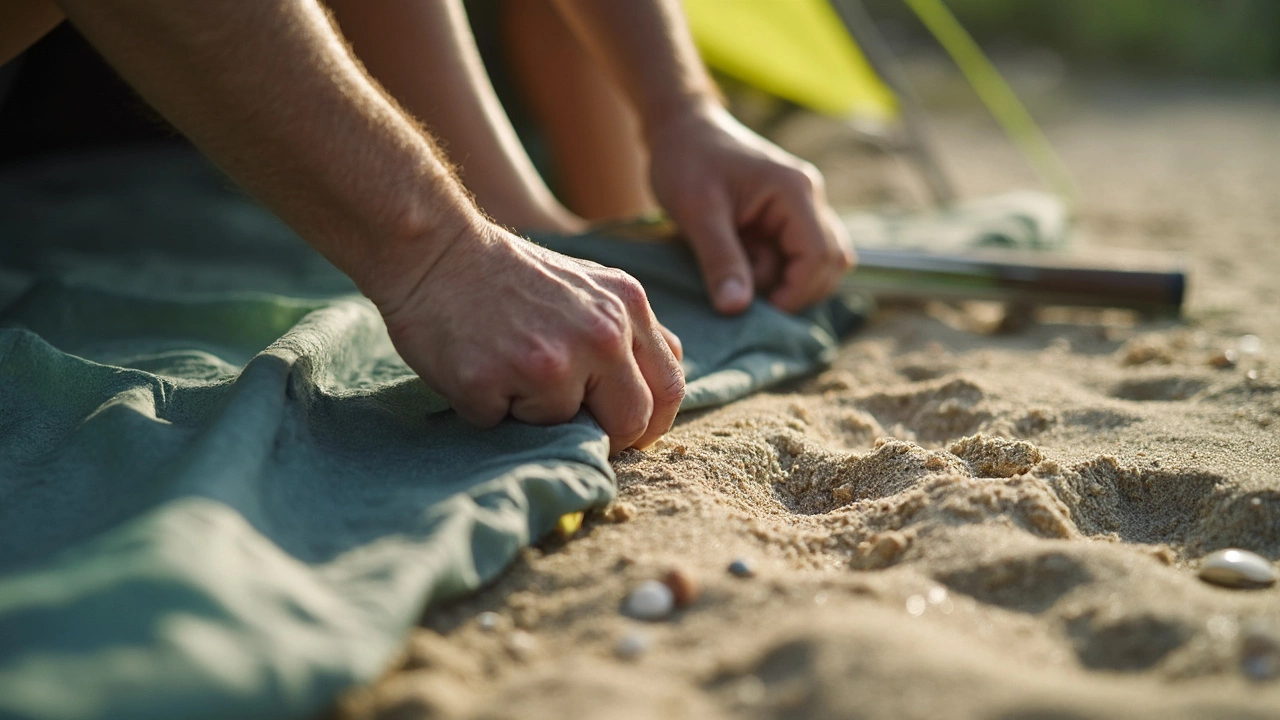
Protecting Your Gear
Sand and salt are the two big troublemakers for your beach camping setup. They creep into everything. Zippers jam. Poles get gritty. And if it’s windy, your tent can turn into a giant sand filter—dumping the stuff into all your gear if you’re careless.
So, where do you start? First, always zip everything up, even if you’re just popping out to shake off your towel. Leaving your tent open for a few minutes is like rolling out the red carpet for sand. The same goes for your bags. Keep food sealed in hard containers; seagulls and other critters will sniff out anything left open, and nobody likes sandy snacks.
- Lay down a groundsheet or tarp under your camping tent. It’ll keep moisture and sand from sneaking in, especially if you tuck the edges under.
- Use mesh bags or organizers inside the tent. It keeps electronics, car keys, and other must-haves away from the sand.
- Pack microfiber cloths. They’re perfect for wiping sand off cameras, phones, or your kids’ sticky hands after digging in the dunes.
- Bring a small broom or brush—trust me, you’ll use it more than once every day.
- If saltwater splashes onto your gear, rinse it with fresh water as soon as possible. Salt can corrode zippers and damage poles faster than you think.
After the trip, don’t just toss everything back into storage. Air out the tent and wash it off with fresh water to stop mold and corrosion. About 40% of tent damage on beach trips comes from not cleaning the gear thoroughly before storing it away, based on a reliable camping retailer survey from last summer.
Keeping your stuff safe doesn’t have to be rocket science, but a little attention upfront can save you cash and headaches after the trip. The beach is unforgiving if you let your guard down, especially with camping gear that wasn’t made for harsh, salty conditions.
Dealing with Sun, Salt, and Wind
The beach gives your camping tent a tougher job than most places. The biggest headaches? Sun, salt, and wind. All three can beat up your gear and make you wish you planned better.
Let’s start with the sun. UV rays break down tent fabrics faster than you might think. Nylon and polyester tents, which are super common, can get brittle or faded after just a couple of days baking in the sun. If you want your tent to survive more than one trip, set it up in the shade whenever possible, or throw a tarp on top to take the heat. Some campers spray their tent with a UV protector before heading out—it won’t make your tent last forever, but it does help slow the damage.
Salt from the ocean air is sneaky. It collects on the zippers and poles, causing corrosion. If you camp near the water, you need to rinse your tent and gear with fresh water when you get home. Don’t wait a few days, salt can start eating metal fast. If you forget, that sticky zipper or stuck pole will remind you next time you need your tent.
Now for the wind. Even on a calm morning, ocean breezes can pick up out of nowhere. Standard tent shapes (especially those tall cabin-style ones) can catch the wind like the sail on a boat. Low-profile, dome-shaped tents do better. To keep your tent from flying down the beach, use sand anchors—normal stakes barely work. Dig into the sand and bury something heavy like a stuff sack filled with sand for each anchor point. There are even beach-specific stakes, which are wide and flat to grip the sand better.
| Element | Risk | Simple Fix |
|---|---|---|
| Sun | UV damage, fabric fades, brittleness | Shade tarp, UV spray, pitch in shade |
| Salt | Corrosion, sticky zippers, damaged poles | Rinse with fresh water after use |
| Wind | Tent collapse, blown away gear | Sand anchors, low tent profile, guy lines |
One last thing: try to close your tent up during the day if you head out to swim or explore. The inside heats up quicker than you think, and it keeps the sand from piling up inside. A little prevention makes a huge difference for your next beach camping trip.
What to Pack for a Beach Camp
Heading out for beach camping isn’t just about grabbing your tent and hoping for the best. A regular packing list for a campground just won’t cut it when you’re dealing with sand, salt, and wind. You’ll want to tweak your kit if you want your trip to be more fun than frustrating.
- Sand Stakes or Sand Bags: Regular tent stakes are basically useless in beach sand. Get heavy-duty sand stakes or bring sandbags to keep your tent down.
- Extra Tarps or Footprints: The beach is rough on tent floors. Lay down a tarp under your tent and another inside if you want to avoid getting sand everywhere. If your tent doesn’t have a good vestibule, an extra tarp for shade or a changing area helps a ton.
- Sun Shelter or Shade: Sun on the beach is no joke. Pop-up shade shelters or large umbrellas can protect your gear and let you hang out without getting roasted.
- Guy Lines and Strong Rope: Wind is stronger near the water. Pack extra guy lines and secure them with sand anchors. Your camping gear and tent will thank you.
- Portable Brush or Small Broom: Bringing a small brush sounds silly until you realize how much sand sneaks into everything. Sweep yourself (and your tent) out each day.
- Waterproof Dry Bags: Saltwater will destroy electronics and ruin clothes fast. Store important stuff in dry bags—no exceptions.
- Good Cooler: Beach heat melts ice in a cheap cooler within hours. Investing in a solid cooler with thick insulation is a game-changer for keeping food safe and drinks cold.
- Light Layers & Sun Protection: Bring a long-sleeved UPF shirt, polarized sunglasses, and reef-safe sunscreen. The sun reflects off the water and sand, so you’ll burn faster than you think.
- Headlamp or Lantern: Searching for your phone by flashlight after dark, in the sand, is no fun. Go hands-free when possible.
- Trash Bags: Beaches = wind. That means your trash will end up flying away if you’re not careful. Tie up your waste so you don’t leave junk behind.
Quick pro tip: sand gets into everything, even the zippers. Spray down or gently brush gear before packing up—your car will stay cleaner, and your tent will last longer.
| Beach Camping Pack Item | Why It's Non-Negotiable |
|---|---|
| Sand Stakes | Keep your tent from flying off with a gust of wind |
| Dry Bags | Protects electronics and clothes against salt and spray |
| Layered Clothing | Guards skin from sun and staves off evening chills |
| Pop-Up Shade | Breaks up direct sun on scorching days |
| Good Cooler | Prevents food spoilage and keeps drinks cold |
If you dial in your packing list with these little tweaks, even camping with kids (like my Larkin) can be a lot less stressful—and a lot more fun. You don’t need top-dollar stuff, just the right basics for a beach camping environment.
